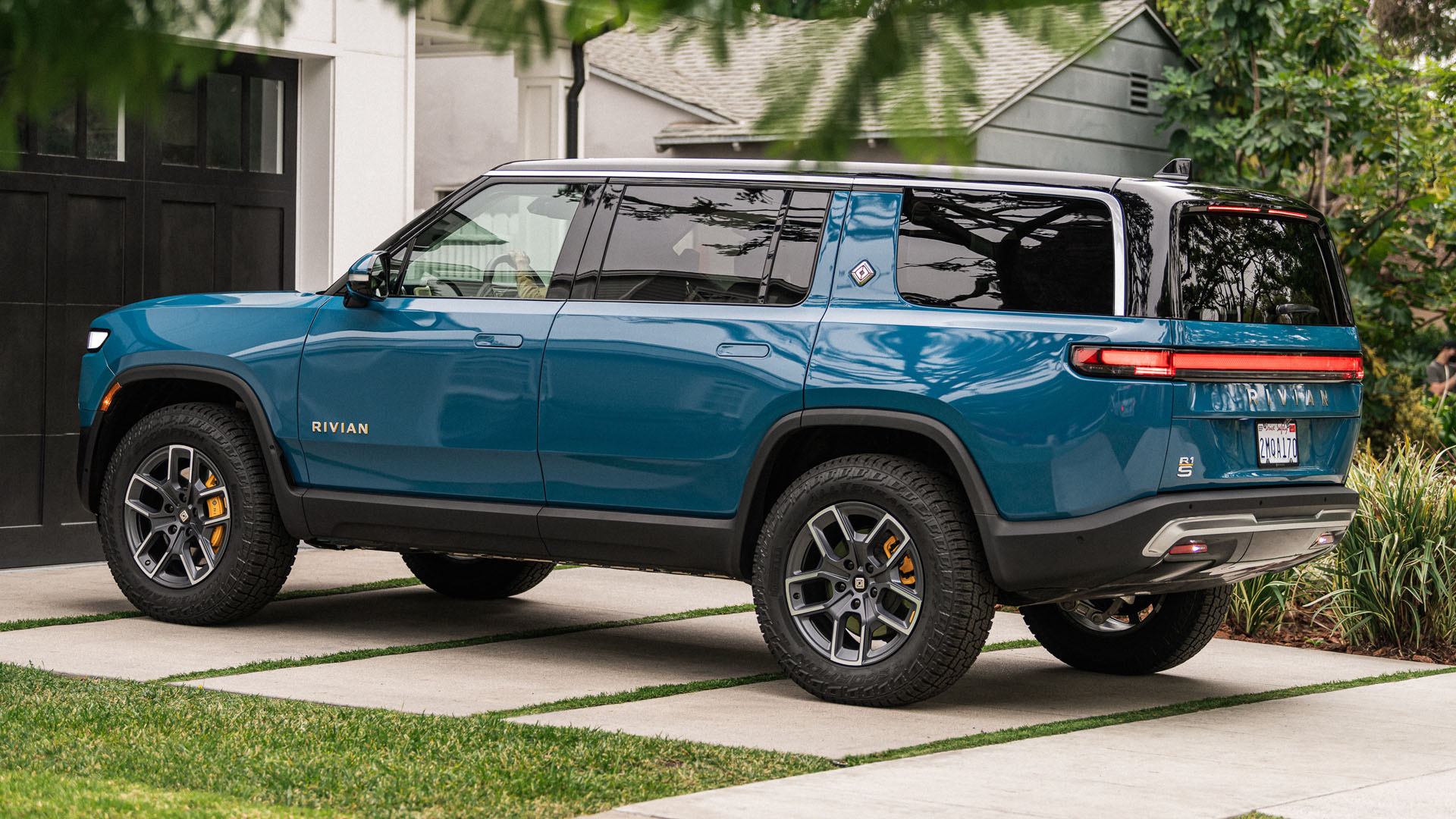

Rivian’s 2023 first-quarter sales results were better than expected, and the automaker says deliveries will only improve as the year continues. That’s partly because standard range versions of the R1T, R1S, and its EDV delivery vans are set to get new battery packs powered by lithium iron phosphate (LFP) battery cells, the company’s CEO said on Twitter. LFP cells are less energy-dense than similar lithium nickel manganese cobalt (NMC) cells, but they’re cheaper, more stable, and more plentiful. In other words, LFP-powered Rivians could be cheaper and easier to produce although they may not have the same range.
Rivian says the new packs will be installed in cars this year. The automaker plans to combat the lower energy density of LFP cells by changing how its packs look internally.
Electric vehicles typically use a module-based construction in groups of cells packaged into smaller packs before being wired together in the full enclosure that gets bolted to the bottom of the car. There are several advantages to that for battery management, assembly, and serviceability, to name a few considerations. Another method, known as cell-to-pack, is what Rivian plans to use in its LFP packs. The method does away with modules to stuff more cells into the space the modules’ structure otherwise would occupy. For instance, Tesla uses it in cars equipped with its new 4680 cells.
That change in construction will translate into more cells per pack, which the automaker hopes will make up for the lower energy density of LFP cells to their NMC counterparts. It’s unclear if Rivian plans to replace the 21700-style cells it uses in its vehicles—so-called because they are 21 mm in diameter and 70 mm long—with 21700s with a different chemistry or a different cell form factor entirely.

Other automakers have made a similar switch to LFP for less expensive trims. Ford, for instance, will be using LFP cells for the base models of its electric vehicles and is building a factory to produce them. GM has likewise been eyeing a switch to LFP, and Stellantis will be using the chemistry for some trims in Europe.
Got a tip? Send us a note: tips@thedrive.com